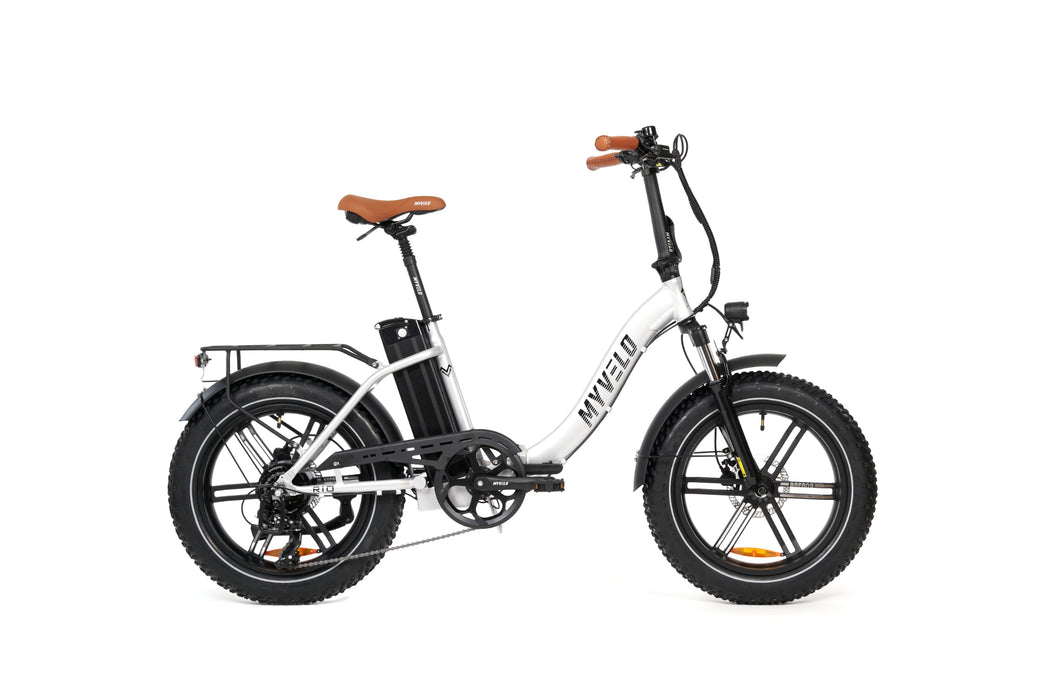
Rio electric folding bike
incl. FREE shipping & free returns
Ready for dispatch immediately, delivery time 2-3 days.

The freewheel is a mechanism on the rear hub of a bicycle that allows the cyclist to rest the pedals in certain situations without the crank and thus the rear wheel turning. The freewheel helps make cycling more efficient and comfortable.
The freewheel consists of a pinion gear mounted on the rear hub and a freewheel clutch. This clutch allows the pinion gear to rotate with the hub in one direction (usually forward) while rotating freely in the other direction. This means that the pedals are only connected to the crank and pinion gear when the rider is pedaling and moving the bike forward.
Situations in which the freewheel is particularly useful are, for example, when riding downhill or when the bike is rolling faster than the rider's pedaling speed. In these moments, the rider can rest the pedals without the crank turning. This increases riding comfort and allows the cyclist to better concentrate on the stability and control of the bike.
The freewheel is now a standard component of almost all bicycles with derailleur gears .

Ein Fahrradanhänger ist eine sinnvolle Erweiterung für alle, die mit dem Rad unterwegs sind und dabei Kinder, Hunde oder Gepäck transportieren möchten. Doch was kostet ein guter Fahrradanhänger eigentlich?

Ein JobRad kann sich finanziell und gesundheitlich lohnen. Mit einem JobRad Rechner lässt sich die individuelle Ersparnis schnell und einfach berechnen. Wer von steuerlichen Vorteilen profitieren und gleichzeitig ein hochwertiges Fahrrad nutzen möchte, sollte sich die Leasingoption genauer anschauen.

Fahrradpedale zu wechseln ist eine einfache, aber essenzielle Wartungsaufgabe, die jeder Radfahrer selbst erledigen kann. Ob für ein Upgrade, den Austausch abgenutzter Pedale oder den Wechsel zwischen Klick- und Plattformpedalen – mit der richtigen Anleitung gelingt der Wechsel problemlos.